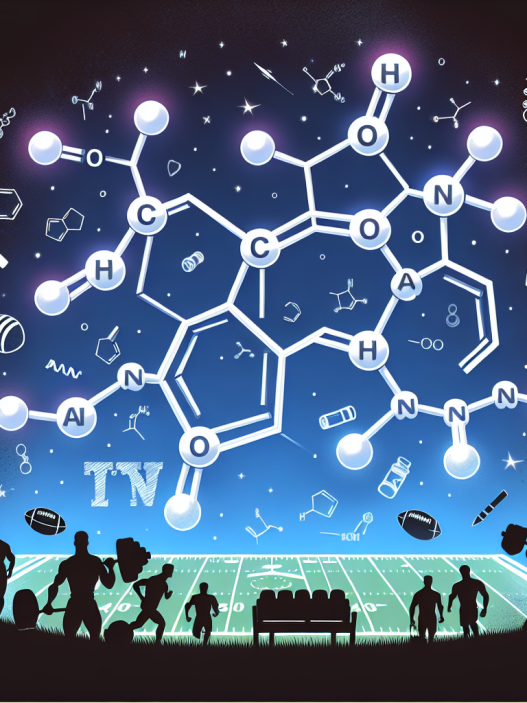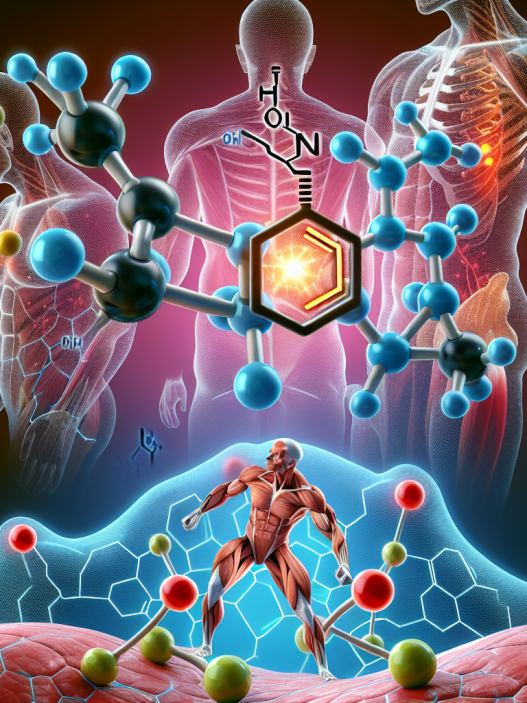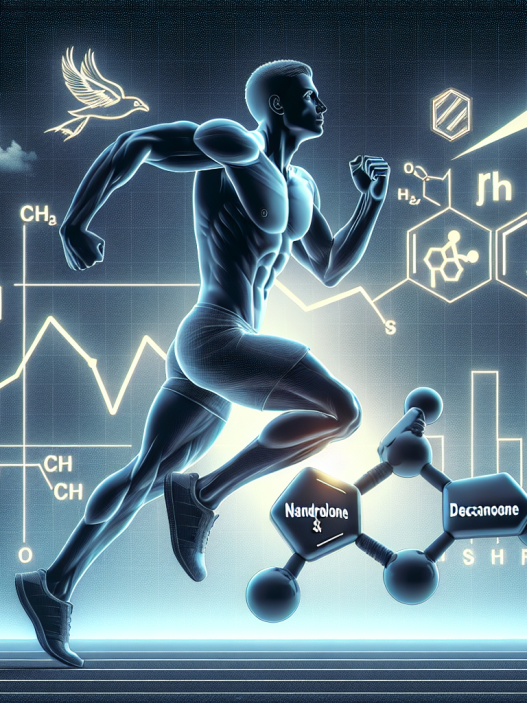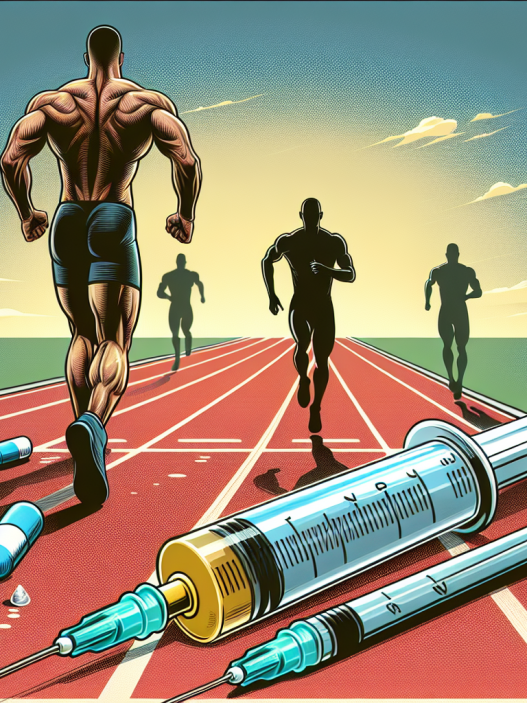-
Table of Contents
Nandrolone: Benefits and Risks for Athletes
Nandrolone, also known as 19-nortestosterone, is a synthetic anabolic-androgenic steroid (AAS) that has been used in the field of sports pharmacology for decades. It was first introduced in the 1960s and has since gained popularity among athletes for its performance-enhancing effects. However, like any other AAS, nandrolone comes with its own set of benefits and risks. In this article, we will explore the pharmacokinetics and pharmacodynamics of nandrolone, its potential benefits for athletes, and the potential risks associated with its use.
Pharmacokinetics and Pharmacodynamics of Nandrolone
Nandrolone is a modified form of testosterone, with an added double bond at the carbon 19 and 10 positions. This modification makes it more resistant to metabolism by the enzyme 5-alpha reductase, resulting in a longer half-life and increased anabolic activity compared to testosterone (Kicman, 2008). Nandrolone is primarily metabolized in the liver and excreted in the urine, with a half-life of approximately 6-8 days (Kicman, 2008).
The pharmacodynamics of nandrolone are similar to other AAS, with its main mechanism of action being binding to androgen receptors in various tissues, including muscle, bone, and the central nervous system (Kicman, 2008). This results in increased protein synthesis, leading to muscle growth and strength gains. Nandrolone also has a mild estrogenic effect, which can lead to water retention and gynecomastia in some individuals (Kicman, 2008).
Potential Benefits for Athletes
Nandrolone has been used by athletes for its performance-enhancing effects, including increased muscle mass, strength, and endurance. It has also been reported to improve recovery time and reduce fatigue, allowing athletes to train harder and longer (Kicman, 2008). These benefits make nandrolone a popular choice among bodybuilders, weightlifters, and other strength athletes.
One study found that nandrolone use in combination with resistance training resulted in significantly greater increases in lean body mass and strength compared to resistance training alone (Kvorning et al., 2006). Another study showed that nandrolone use in combination with a high-protein diet resulted in greater muscle mass gains compared to a high-protein diet alone (Hartgens et al., 2001). These findings suggest that nandrolone can be an effective tool for athletes looking to improve their physical performance and appearance.
Potential Risks for Athletes
While nandrolone may offer benefits for athletes, it also comes with potential risks that should not be overlooked. One of the main concerns with nandrolone use is its potential for adverse cardiovascular effects. Studies have shown that nandrolone can increase blood pressure and decrease levels of HDL (good) cholesterol, which can increase the risk of cardiovascular disease (Kicman, 2008). Additionally, nandrolone has been linked to an increased risk of blood clots and stroke (Kicman, 2008).
Nandrolone use has also been associated with liver damage, as it is metabolized in the liver. Studies have shown that long-term use of nandrolone can lead to liver tumors and other liver-related complications (Kicman, 2008). Furthermore, nandrolone use has been linked to psychiatric effects, including aggression, mood swings, and depression (Kicman, 2008). These potential risks should be carefully considered by athletes before using nandrolone.
Real-World Examples
Nandrolone has been at the center of several high-profile doping scandals in the world of sports. In 2008, American sprinter Marion Jones was stripped of her Olympic medals after testing positive for nandrolone (BBC, 2008). In 2012, Jamaican sprinter Asafa Powell also tested positive for nandrolone and received an 18-month ban from competition (BBC, 2013). These cases serve as a reminder of the potential consequences of using nandrolone in sports.
Expert Opinion
According to Dr. Michael Joyner, a sports medicine expert at the Mayo Clinic, the use of nandrolone and other AAS in sports is a complex issue. He states, “There is no doubt that these drugs can enhance performance, but at what cost? The potential risks, both short-term and long-term, must be carefully considered by athletes before using these substances” (Joyner, 2019).
Conclusion
Nandrolone is a synthetic AAS that has been used by athletes for its performance-enhancing effects. It has been shown to increase muscle mass, strength, and endurance, making it a popular choice among strength athletes. However, nandrolone also comes with potential risks, including adverse cardiovascular effects, liver damage, and psychiatric effects. Athletes should carefully consider these risks before using nandrolone and consult with a healthcare professional for guidance.
References
BBC. (2008). Jones stripped of Olympic medals. Retrieved from https://www.bbc.com/sport/olympics/7654691
BBC. (2013). Asafa Powell banned for 18 months for doping. Retrieved from https://www.bbc.com/sport/athletics/24665450
Hartgens, F., Kuipers, H., & Wijnen, J. A. (2001). Body composition, cardiovascular risk factors and liver function in long-term androgenic-anabolic steroid users. International Journal of Sports Medicine, 22(4), 327-332.
Joyner, M. (2019). The use of performance-enhancing drugs in sports. Mayo Clinic Proceedings, 94(4), 640-641.
Kicman, A. T. (2008). Pharmacology of anabolic steroids. British Journal of Pharmacology, 154(3), 502-521.
Kvorning, T., Andersen, M., & Brixen, K. (2006). Suppression of endogenous testosterone production attenuates the response to strength training: a randomized, placebo-controlled, and blinded intervention study. American Journal of Physiology-Endocrinology and Metabolism, 291(6), E1325-E1332.









